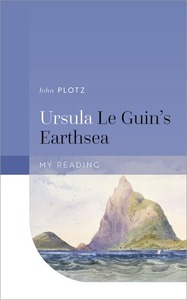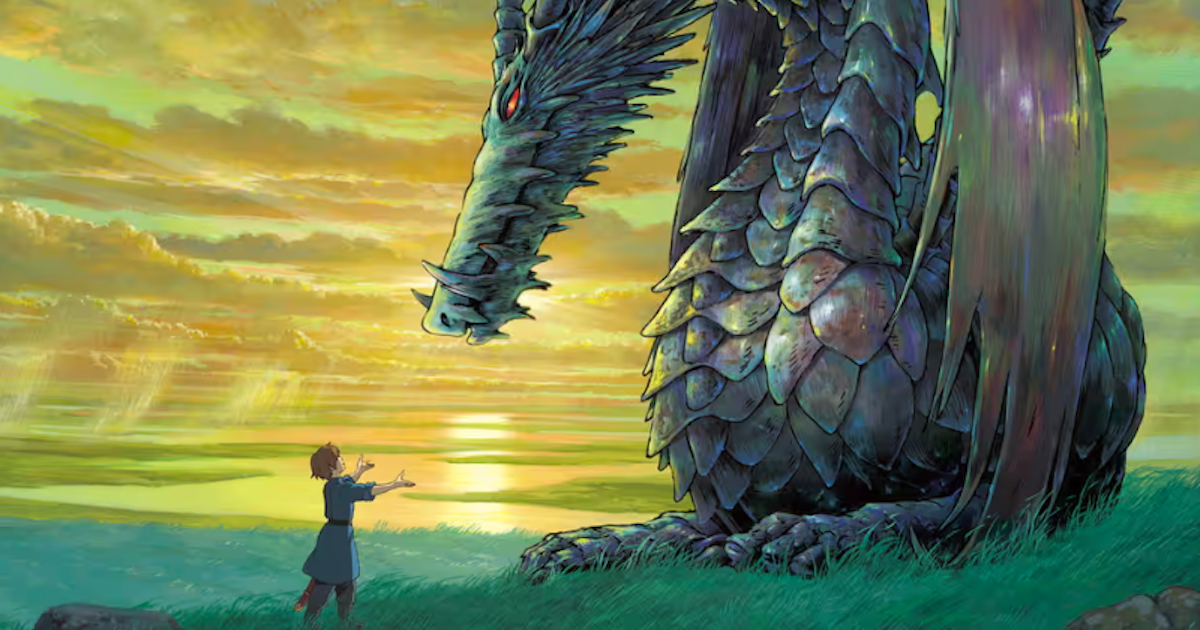Nobody would dare to boil down Ursula Le Guin’s marvelous writing—all that fantasy, all that science fiction, poetry, essays, translations—into one idea. But in a pinch I’d pick two sentences from her 2014 National Book Award speech: “Capitalism[’s] power seems inescapable. So did the divine right of kings.”
Fantasy and science fiction never meant escapism for Ursula Le Guin. The dragons of Earthsea and the reimagined genders of The Left Hand of Darkness were always lenses, lenses she ground in order to sharpen her readers’ focus on everyday life. Indeed, for Le Guin, there was no difference between the stories she invented and everyday stories about the institutions governing our world. The dragons of Earthsea and capitalism are woven from similar material: it is imagination all the way down.
James Baldwin said not everything that can be faced can be changed, but nothing can be changed without being faced. The word for facing things in Le Guin is recognition, or you might even say re-cognition. Her characters—and readers—find themselves forced to think again. When they do so, what had seemed a fundamental truth about their universe turns out to be anything but.
As a lonely kid in an overlit DC public library, it was the first Earthsea trilogy (A Wizard of Earthsea, The Tombs of Atuan, and The Farthest Shore, 1968—1974) that made me fall in love with Le Guin. But decades later (in Tehanu, Tales from Earthsea and The Other Wind) she shocked me by coming back to Earthsea and revealing that every seeming truth—about dragons, the power of magical names, even gender rules—was subject to change.
Le Guin changed horses in mainstream, and made me realize how much that happens in our own world, as well—quietly, at midnight, with everyone busily pretending that nothing has transpired. The way she returned to the site of her greatest triumph and fixed what didn’t appear broken taught me an unforgettable lesson about the power, and the perils, of re-imagining reality. That’s why I wrote her a reader’s love-letter: Ursula Le Guin’s Earthsea.
Here is what I learned from Le Guin: Imagination is a beautiful and a shadowy builder. Over the generations, it supplied language, gods, music, arts, pretty much everything we sum up as culture. But imagination’s power comes at a familiar price: all power corrupts. Looking at those delightful surfaces painted onto the world by past acts of imagination, it can become hard to catch sight of what is really there, underneath. The philosopher Ludwig Wittgenstein has a wonderful phrase: “a picture held us captive.” It applied to divine right of kings at one time, and may apply now to capitalism.
Ending a picture’s captivity involves cracking common sense, and that is where some of my favorite writers come in. Jane Austen’s wit helped her readers peer beneath the surface of Regency England’s marriage market; Mark Twain’s Huck Finn tore aside the racial lies of 19th century America. During the Nixon era, Le Guin’s fantasy and her science fiction did the same: she pushed aside captivating pictures and let the light shine in. Then she returned to Earthsea decades later and did it all over again.
We tend, as a people, to look upon all works of the imagination either as suspect, or as contemptible.
It may seem funny to praise a great fantasy and science-fiction novelist—the first speculative writer published by Library of America!—for facing reality. However, Le Guin is a trustworthy demystifier because she’s a wonderful fabulist, not despite it. Nobody has a sharper eye for imaginative constructions that masquerade as indisputable reality: she knew Henry Kissinger and Robert McNamara could conjure up imaginary worlds better than Tolkien.
The reconsideration of seemingly solid reality takes many memorable forms in Le Guin’s science fiction. The Lathe of Heaven (1971) explicitly unpacks the dangers of thinking too highly of your own ambition to remake the world. It centers on George Orr, whose dreams can alter reality.
Orr himself is cautious about remaking the world (he earns the apt nickname “Either/Orr”). But he soon acquires an overconfident handler, Dr. Haber, full of great instructions about what he should dream. Every well-intentioned action comes with unintended consequences. Get rid of racial hatred!—he dreams everyone gray. Bring peace between all humans!—there is an extraterrestrial invasion. Solve overpopulation!—a plague kills 90% of humanity.
Faced with Dr. Haber’s righteous mission, it is George’s hesitancy and distrust of action that serves him best: Le Guin has a soft spot for inaction heroes.I rank The Lathe of Heaven alongside the two Earthsea trilogies: my friends and relatives will tell you they’re hard to avoid when birthdays and holidays roll around. But …
In 2023, it seems very clear exactly which Le Guin novel should be on every nightstand and school library display shelf: her escape-act from the blinkers of gender.
The Left Hand of Darkness (1969) centers on Genly Ai, a male emissary from Earth (pompous, a little slow on the uptake). He arrives on Gethen, a world where people live genderless almost all month, before pivoting, circumstances permitting, to three days of male or femaleness. His friendship (which is more than friendship) with the gender-mutable Estraven is formed in flight: in exile, in prison, on a long cold northern escape attempt that Le Guin modeled on Scott’s doomed South Pole expedition.
As they trudge along a frozen ice-sheet, poised between life and death, categories like native/alien and man/woman finally drop from Genly’s vocabulary and his mind. Just as the divine right of kings did, just as capitalism will in time. It still amazes and delights me that the recently released Le Guin postage stamp shows Genly and Estraven struggling besides their sled, androgynous and magnificent. I like to imagine the look on the face of Louis DeJoy, Trump’s postmaster general, if the meaning of that scene ever dawns on him.
In Le Guin’s most famous essay, she asks “Why are Americans Afraid of Dragons?” Her answer is blunt: “We tend, as a people, to look upon all works of the imagination either as suspect, or as contemptible.” Meditating on those dragons that she wants Americans neither to fear nor to ignore, she concludes that fantasy … isn’t factual, but it is true. Children know that … by such beautiful non-facts [as “once upon a time there was a dragon”] we fantastic human beings may arrive, in our peculiar fashion, at the truth.
Dragons spring to life out of wherever stories come from.
The funny thing is that the same applies to human beings. Tehanu, the first book of Le Guin’s second Earthsea trilogy, describes a fan painted with two distinct scenes, one on each side. Hold it up the light, though, and you can see
the two sides, the two paintings, made one by the light flowing through the silk, so that the clouds and peaks were the towers of the city, and the men and women were winged, and the dragons looked with human eyes.
Our dragons, ourselves.
Whatever has been invented, Le Guin teaches us, can be reinvented. We’re doing it constantly, one poem, speech or tweet at a time. Aren’t we lucky, though, that a few inventors (Austen, Twain, Le Guin) advance in full view. They show the cards up their sleeves, sharing with their audience a delight in the way worlds get made and remade by fiction?
____________________________

John Plotz is the author most recently of Ursula Le Guin’s Earthsea, available from Oxford University Press.
